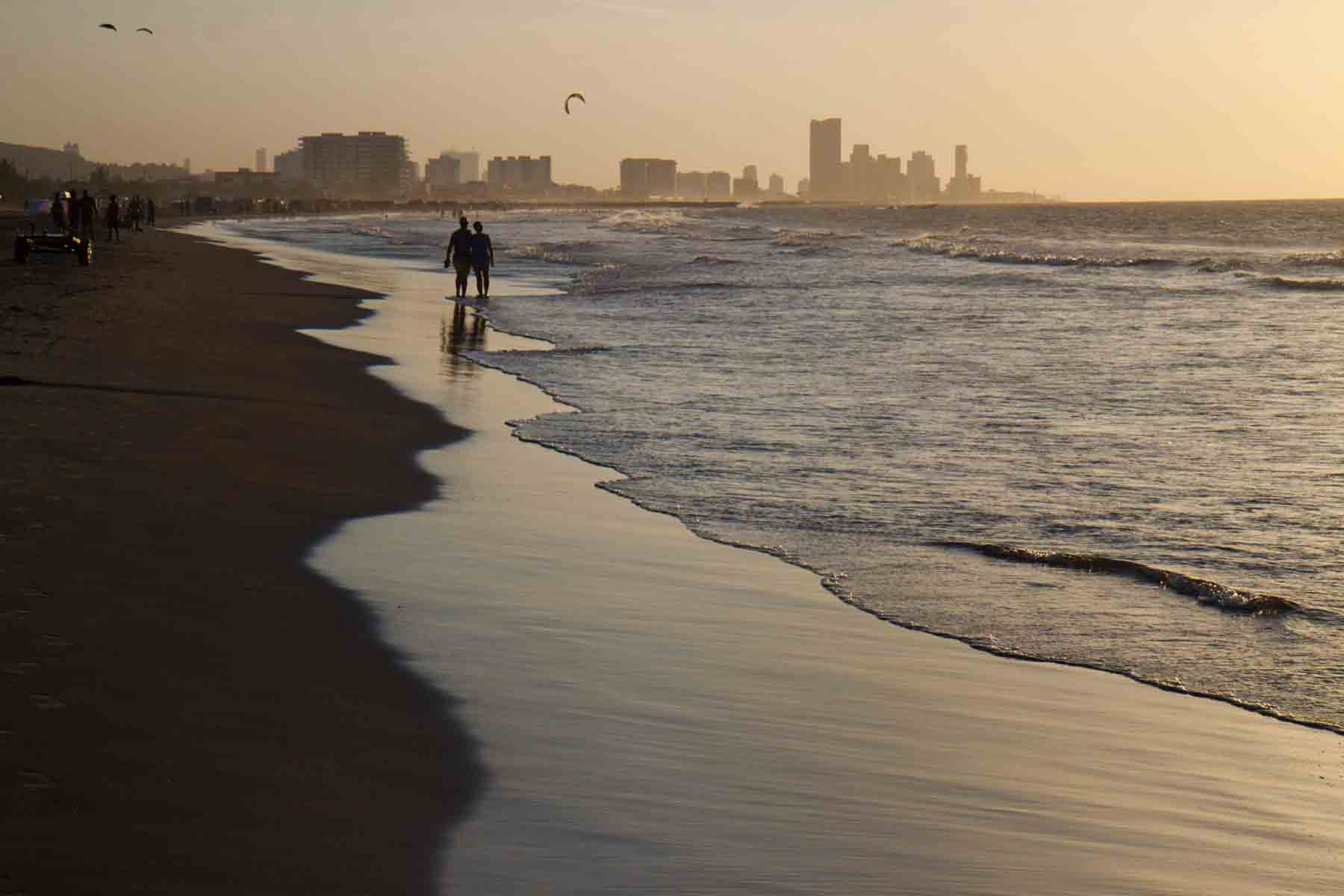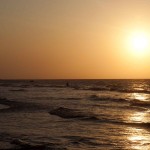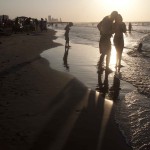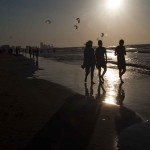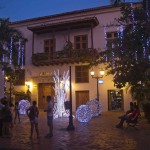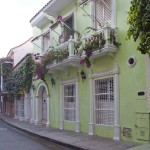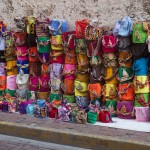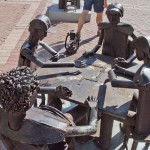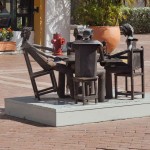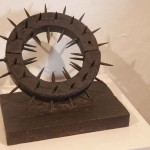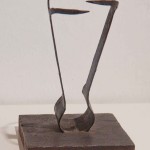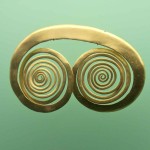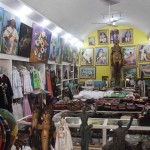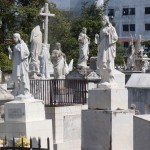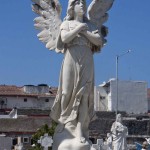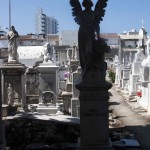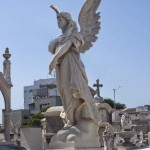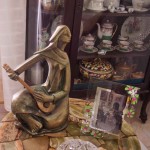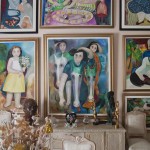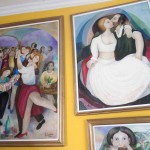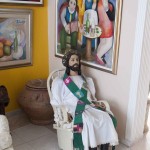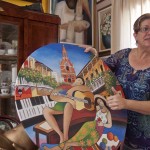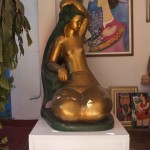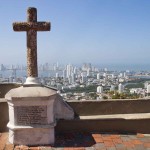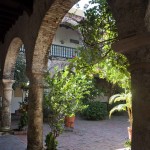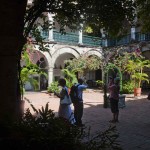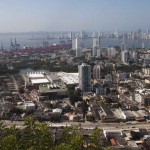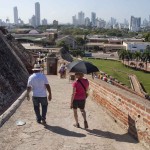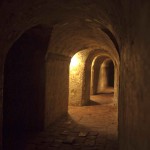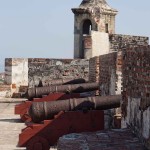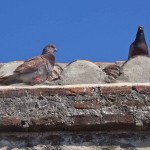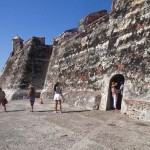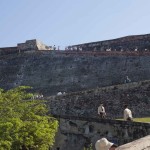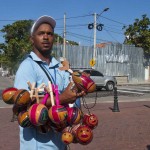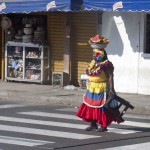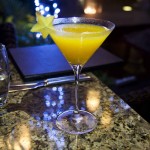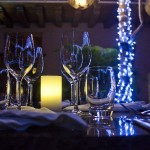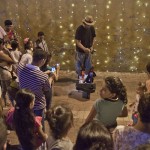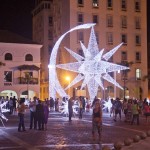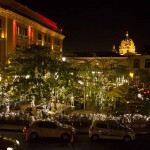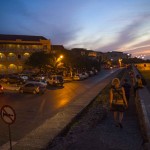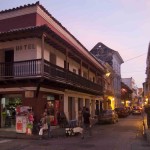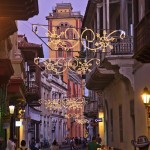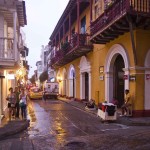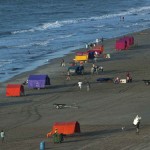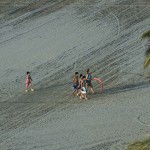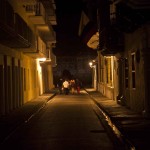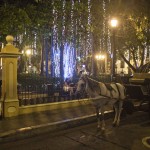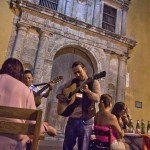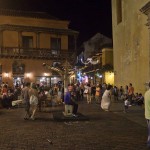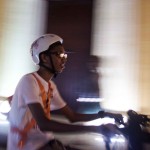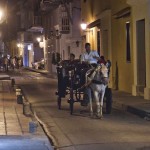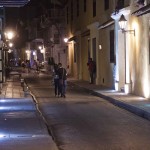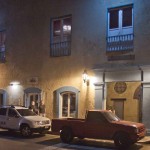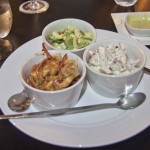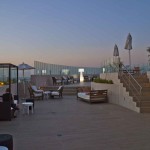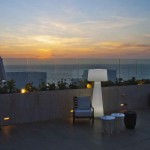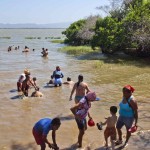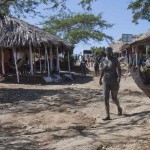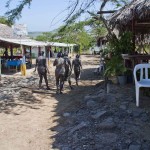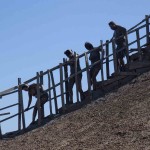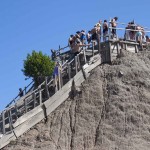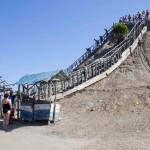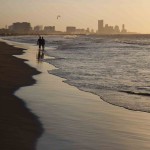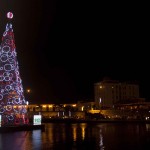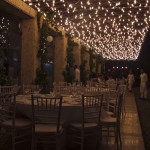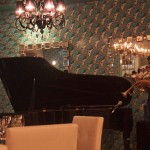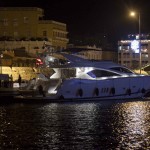Cartagena. Being a teenager in the 80s, the one thing I learnt from Romancing the Stone was how to pronounce the name of this Colombian city. Things have changed here since Kathleen Turner and Michael Douglas romped through town. Now, Justin Beiber has bought a house in the old town, where $1millionUSD will get you a renovated 2 bedroom apartment. But I can see why he has bought here – the historic centre is gorgeous, full of colour, music, flavour and life.
Our hotel is right on the beach, a 15 min cab drive from the historic centre, where we are getting much more value for money – the Radisson Cartagena. This place is so new that there are entire floors not yet open for business, along with a café and restaurant.
Only 20 minutes after our check in at the Radisson we were collected by our guide, Javier (from Destino Bogota), for a ‘Volcano Tour’ at the Volcán de Lodo El Totumo. None of us knew what this would entail, so we were spectacularly unprepared. We had no idea that it was a 45 min drive to a huge hill, like an ant hill, where people in their swimming costumes climb a rickety old stair case, get dunked in the volcano mud at the top of the crater (containing therapeutic minerals), and stumble down another set of rickety stairs with mud in their eyes, before tenderfooting it down to the lake to be washed off by local women wielding plastic mixing bowls, who throw in a quick shoulder massage for good measure. None of us had swimming costumes, so it was all a no-go. Shame that. Not sure I would’ve done it, but our friends were disappointed.
Caught a cab into the old town for dinner. All in the service industry seem MUCH more on the ball here in Cartagena compared to Panama. The English isn’t necessarily much better, but there is much more of a desire to help and it’s always done with a smile. We all fell in love with the old town on our first visit. We went to Salou Restaurant for dinner, which specialises in seafood and are famous for their ceviche. While they didn’t have it on the menu, they did offer the substitute of mushroom instead of the raw fish, which was absolutely delicious!! It began with a spinach and coriander (cilantro), followed by a roast pepper, and finished with a sour cream and sweet plantain. They also gave us a dish similar to a vegetable ravioli (whose name escapes me, but it starts with an ‘s’), but it was so very light, almost like a flat steamed dumpling. Also fabulous! The wine was lovely and so was the atmosphere with the acoustic guitarist playing right near our table.
After our meal we ambled around the small section of the old town near the restaurant, and there were people everywhere, all in a festive mood. Plaza Santo Domingo was jumping – tables filled the square, and restaurants and bars surrounded it. Music was pumping from various venues and hawkers had their jewellery spread out under a central tree. We continued walking, following the path of the horse drawn open carriages to the Parque de Bolivar, where artists had their wares displayed and kids were playing with toys.
Meandering back to Plaza Santo Domingo we spotted and jumped into a vacated table of four among the sea of people. Ordered some beers and just sat and chatted, taking it all in. Already loving this city.
Bumming around the hotel took up most of the next day – being a tad travel-weary and with John feeling under the weather we felt we deserved to relax by the pool. Lunch was had ‘in house’ and we forked out for the buffet – considering what we could actually eat from it, we paid $25 USD each for a gigantic salad!
Feeling energised from our day of rest, we headed into the historic centre for dinner at Carmen’s Restaurant in Ananda Hotel. This was in a serene setting on raised steel platforms above a water feature. I had a perfect cocktail called ‘Catrina’ made with tequila, mango liqueur, passionfruit liqueur, a couple of other things and a dash of chilli powder. Delicious! For our meals we had a special salad that wasn’t on the menu and some deep fried tamales topped with melon on some ‘smears’ of avocado.
An 8-hour city tour filled the following day. We started with the old fortress – Castillo San Felipe de Barajas. The castillo is gigantic and formidable, “the greatest and strongest fortress ever built by the Spaniards in any of their colonies” (Lonely Planet). The intricate tunnel system is pure genius, and more than a little scary. The design enabled defenders of the fortress to be hidden in absolute darkness in wait for anyone foolhardy enough to attempt to navigate the tunnels. I literally could not see John in a blackened alcove only one metre from me in the lit passageway. They were also constructed in a way that allowed for the slightest noise to travel a great distance through the maze, not only alerting the occupants to intruders’ footsteps, but also meant ease of communication within the walls. An eerie experience even now with torches and a knowledgeable guide leading the way.
The Convento de la Popa was next on our agenda – a convent on top of the tallest (and pretty much only) hill of the city (150m high). While the monastery and its serene and lovely cloister and golden altar are worth a visit, the real attraction is the view over the city. A statue of the patroness of the city, La Virgen de la Candelaria, lives in the chapel. On festival days this image is carried into the old city as part of the celebrations. Apparently the ‘crown’ on her head is made of 22carat gold.
From there we diverted from the tour plan because we asked to look at some local artworks, so Javier took us to the house of an amazing husband and wife artist team. His name was Eladio Gil Zambrana (he died 4 years ago), but was a sculptor and painter who created the India Catalina monument in Cartagena. Her name is Fini Piñero de Gil and she is still happily painting in her 80s. Her daughter, Raquel, greeted us at the gate of their home, which is painted vibrant lavender with white trim, built 120 years ago. The house was pretty much a gallery with paintings hanging on every inch of wall space. There were two pieces in particular that John and I liked, but at $3,800 USD, they were a little out of our reach (one by each artist). The one I liked, Raquel didn’t want to sell anyway…although if we had the money, I am sure we could’ve come to an agreement after some intense haggling!
An unusual tourist attraction was next on the list – Manga’s Cemeterio de Santa Cruz, dating from the 1700s. This very old cemetery has been declared an historic monument, and so a lot of the old, more majestic tombs are being restored. The central avenue holds many magnificent sepulchres, those belonging to wealthy citizens, while the outer edges, especially to the left, belong to the poor of the city. Some of these tombs are actually ‘shelved’ in the wall of the cemetery, arranged like the drawers in a morgue, only the spaces are brick and tile, not drawers! There were a lot of open and empty ones, the only sign there was once an ‘inhabitant’ was the broken tile around the front face of the ‘slot’. After 4 years of decomposing, the remains are removed and kept at a family member’s house, either as bones or what is left is cremated and kept as ashes. This certainly prevents an overcrowding problem!
The rest of our day involved more wandering and visiting of popular tourist spots. Museum d’Oro (the Cartagena Gold Museum) is like a miniature version of Bogota’s world class gold museum, containing pre-Colombian gold artifacts and some of the oldest ceramics in the Americas. It is situated on the Plaza de Bolivar, once the Plaza de Inquisición, and surrounded by elegant balconied colonial buildings. Perfect spot to sit and relax in the shade of the trees and people-watch.
The Palacio de Inquisición is also on Plaza de Bolivar, and this little museum was full of some very nasty torture instruments – displays were complete with drawings of how they were used. The perverted inventiveness of the torture instruments was quite disturbing – none more so than the spiked breast clamp…designed to get those poor women to confess to witchery. Ironically, this building is one of the finest buildings in the city, with its baroque stone gateway and long balconies.
Our final days in Cartagena were spent relaxing and recovering from our fine dining excesses. Marea by Rausch (one of the best seafood restaurants in town) was very fancy-cool and beautifully styled. Their mushroom risotto, which was the only vegetarian option, was rich and filling. I find the lack of ‘sides’ on menus in this part of the world quite surprising and a little frustrating. We are usually able to cobble together enough options through this section of a menu to satisfy, but when not presented with any, it becomes just another meal of mushroom risotto. At least at Marea by Rausch the service was impeccable, unlike the very disappointing Alma Restaurant at the high-end boutique hotel Casa San Agustin. The discontent began with a very unwelcoming reception where they tried to refuse us entry because the men were wearing shorts. As this dress code was articulated no where on their website or in any of the emails we received when making the reservation, we persevered and were given entry. Probably should’ve taken this as a sign and found somewhere else to eat. When we entered the dining area, most of the patrons were similarly attired – one table seating only a group of teenagers (their parents were drinking in the bar and did not make an appearance in the dining room all evening), had young women wearing denim short-short cut-offs. Would love to know how this fitted into their dress code…but when one is the child of rich guests, I guess one can wear what one wants!
The service was incredibly slow, the errors common and the attitude of the servers almost as cold as the deep fried mozzarella balls starter we ordered. Our choices for the evening were limited but we added a salad and a goat’s cheese tart to our mozzarella balls. The tarte was adequate, but the salad, which on the menu had meat in it and we requested it without, contained only baby spinach, some slivers of mushroom, slices of onion and a sea of balsamic. In explaining that we wanted no jamon, they decided to remove the fetta as well. The balsamic was so intense that the salad was inedible. These three dishes and our two glasses of bubbles cost us $130 USD. Insanely over priced! Luckily, our companions had much more favourable outcomes with their choices, including an avocado topped terrine and empañadas.
Apart from the disappointment of Alma, we had all fallen for the history, friendliness and warm charm of Cartagena. The vibrant nightlife full of fun, culture and music that welcomed all ages and walks of life made for a wonderful balance of family oriented entertainment and the more energised diversions for a younger set. No wonder ‘The Beib’ has decided this would be a cool place to hang, I agree with him.
Click on any image below to view as gallery
- Orange sunset, Cartagena
- Beach romance, Cartagena
- Sunset on the beach, Cartagena
- The well lit pavement outside Alma Restaurant
- Colourful houses in one of the most beautiful streets in Cartagena
- Bags for sale, Cartagena
- Dominoes sculpture, Cartagena
- Cool street art, Cartagena
- Spiked collar from the Palacio de Inquisicion, Cartagena
- Breast torture implement at the Palacio de Inquisicion, Cartagena
- Gold jewellery at the Museum d’Oro, Cartagena
- Gallery and souvenir shop where we bought one of Fini’s paintings
- Robed men adorning tombs at the Manga’s Cemeterio de Santa Cruz, Cartagena
- The angel is quite a popular motif in this place
- Angel silhouette at Manga’s Cemeterio de Santa Cruz, Cartagena
- Angel at Manga’s Cemeterio de Santa Cruz, Cartagena
- A sculpture and family photo
- And more paintings
- Surrounded by paintings
- Slightly unnerving sculpture of Jesus in the living room
- Racquel surrounded by her parents’ work
- One of the many sculptures at Fini’s house
- Cross with a view from Convento de la Popa, Cartagena
- Cloister of Convento de la Popa, Cartagena
- Flower-filled courtyard of Convento de la Popa, Cartagena
- Cartagena panorama from the Convento de la Popa
- Leaving the old fortress in Cartagena
- Tunnels of the Castillo San Felipe de Barajas, Cartagena
- Canons atop the Castillo San Felipe de Barajas, Cartagena
- Pigeons ‘manning’ the fortress, Cartagena
- The ramparts of Castillo San Felipe de Barajas, Cartagena
- The ramp to the top of the Castillo San Felipe de Barajas, Cartagena
- Street vendor selling maracas, Cartagena
- Watermelon for sale, Cartagena
- Delicious cocktail called ‘Catrina’ at Carmen’s Restaurant, Cartagena
- Dinner table at Carmen’s Restaurant in Ananda Hotel, Cartagena
- Street performer, Cartagena
- Christmas decorations, Cartagena
- Fancy Cartagena hotel setting up for a fancy evening
- Historic city wall, Cartagena
- Old town Cartagena
- Cartagena ‘eat street’
- Historic Centre of Cartagena, evening
- Setting up for a day of tourist beach activities, Cartagena
- Morning beach walk, Cartagena
- Walking home, historic centre, Cartagena
- Horse waiting for a customer in Parque de Bolivar, Cartagena
- Guitars and beers in Plaza Santo Domingo, Cartagena, evening
- Plaza Santo Domingo, Cartagena, evening
- Young motorcyclist, Cartagena
- Not just tourists use the horse drawn carriages in Cartagena
- Lovers walking through the old town of Cartagena
- Salou Restaurant Cartagena, night
- Trio of vegetarian ceviche at Salou, Cartagena
- Rooftop pool area of the Radisson Cartagena, Colombia
- Sunset from the rooftop of the Radisson Cartagena, Colombia
- Coming clean at Volcan de Lodo el Totumo, Colombia
- A very muddy customer at Volcan de Lodo el Totumo, Colombia
- Walking to the lake to wash off all the mud from Volcan de Lodo el Totumo, Colombia
- Coming down from the Volcan de Lodo el Totumo, Colombia
- Nearing the top of the Volcan de Lodo el Totumo, Colombia
- Volcan de Lodo el Totumo, Colombia
- The Caribbean Sea, Cartagena
- Christmas tree, Cartagena
- Al fresco at seafood restaurant Marea by Rausch, Cartagena
- Jazz musicians at Marea by Rausch, Cartagena
- A yacht delivering guests to Marea by Rausch, Cartagena

